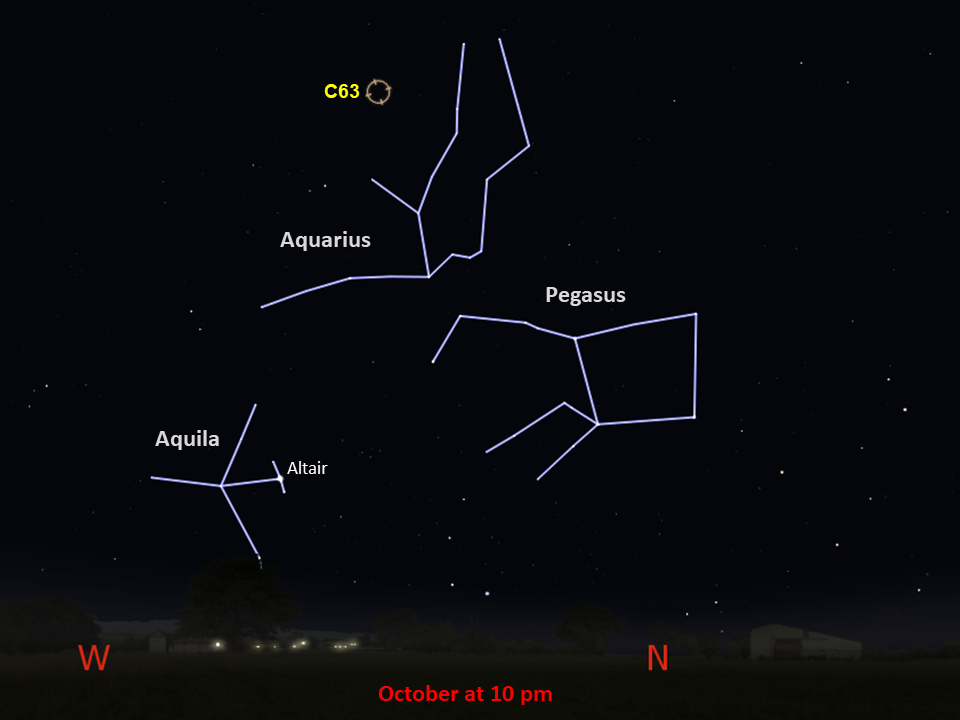Caldwell 63
Better known as the Helix Nebula, Hubble's image of Caldwell 63 is one of its most iconic.
Distance
650 light-years
Apparent Magnitude
7.3
constellation
Aquarius
object type
Planetary Nebula
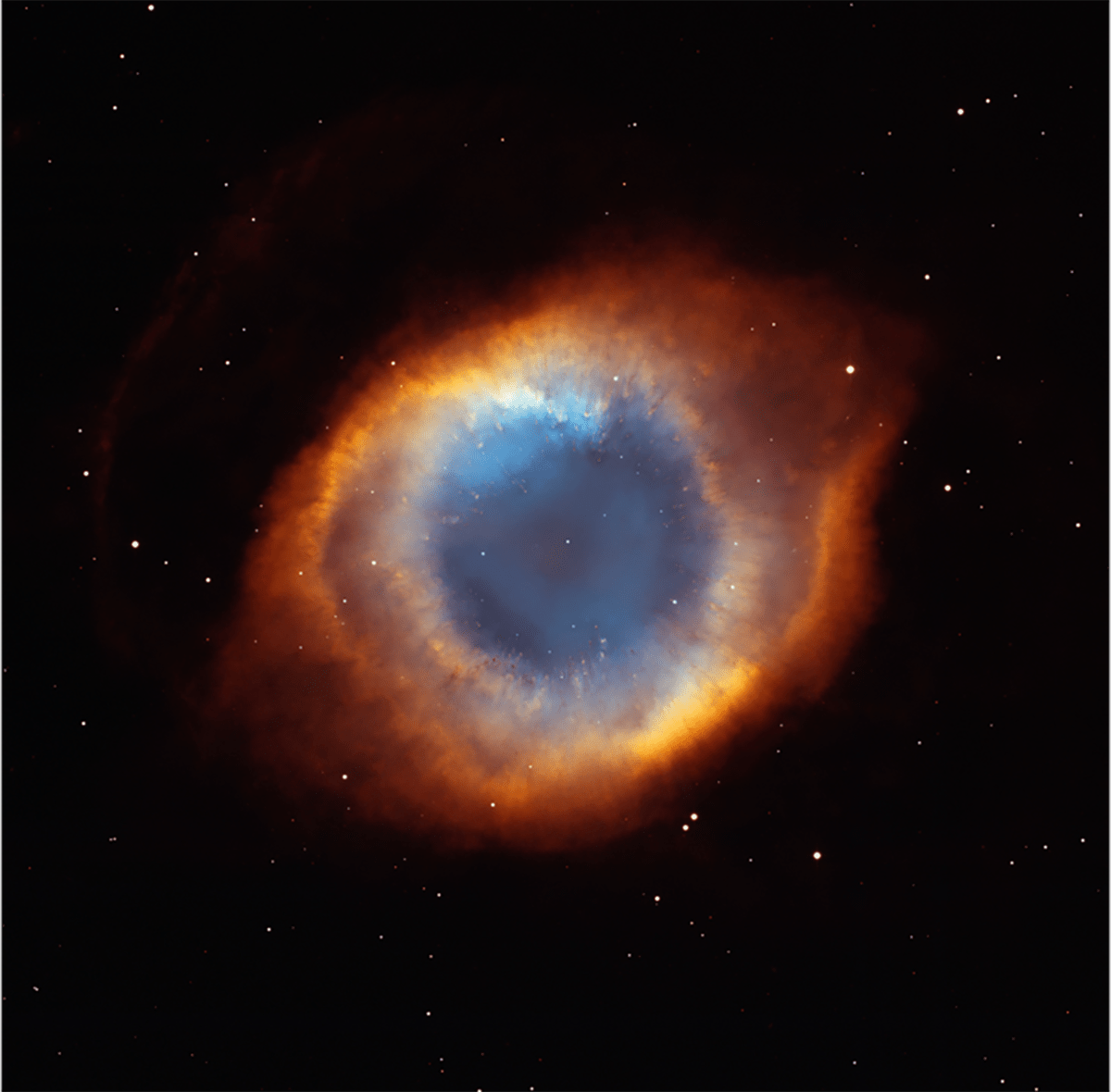
Many of the Caldwell objects are millions of light-years distant, but Caldwell 63 is right in our cosmic neighborhood — only about 650 light-years away in the constellation Aquarius. Also cataloged as NGC 7293, Caldwell 63 is commonly called the Helix Nebula. It is a planetary nebula of gigantic proportions, with its bright ring stretching across nearly 3 light-years and dimmer, outer features extending even farther. Planetary nebulae like this one have no actual connection to planets but are called that because many of them have disk-like shapes that look like planets when viewed through small telescopes. They are produced as a medium-mass star dies and sloughs off its outer gaseous layers. These layers are expelled into space at astonishing speeds and glow from the energy given off by the dying star. The Helix Nebula is one of the closest planetary nebulae to Earth, giving scientists a detailed look at this type of stellar demise.
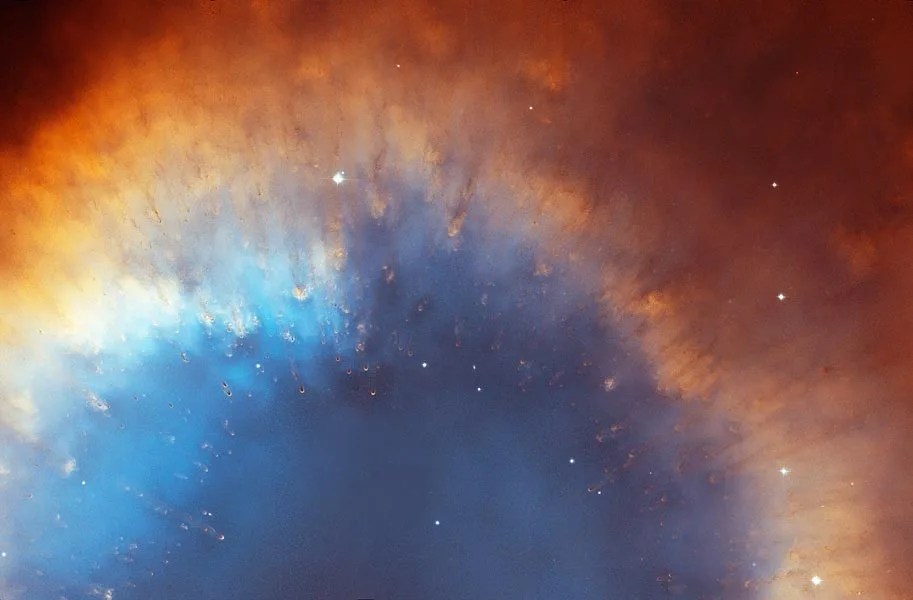
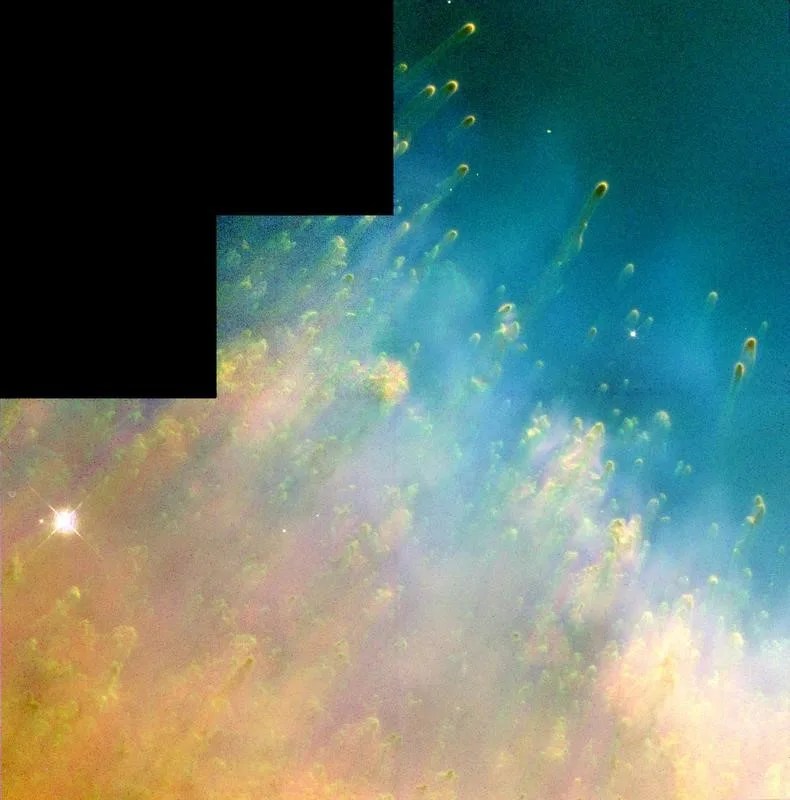
Because it is so close, the Helix Nebula appears to be nearly half the width of the full moon. So to capture this view, Hubble astronomers had to take several exposures using the Advanced Camera for Surveys, which were then combined with the wide view of the Mosaic Camera on the National Science Foundation’s 0.9-meter telescope at Kitt Peak National Observatory. The colors in the image correspond to glowing oxygen (blue) and hydrogen and nitrogen (red).
Through Hubble’s observations of the nebula, scientists have made some startling discoveries. It seems that the Helix Nebula isn’t doughnut-shaped, as it appears. Instead it consists of two disks that are nearly perpendicular to each other — the inner part (the blue region in Hubble’s image) is “tipped” relative to the outer ring. Hubble has also imaged comet-like tendrils that form a pattern around the central star like the spokes on a wagon wheel. While these comet-like features were not a new discovery, Hubble has revealed that the gaseous knots likely result from a collision between gases. The dying star spews hot gas from its surface, which crashes into the cooler gas that it ejected 10,000 years before. Eventually the knots will dissipate into the cold blackness of interstellar space.
Discovered by German astronomer Karl Ludwig Harding in 1823, the Helix Nebula is a favorite target for amateur astronomers. It is best viewed in the early spring from the Southern Hemisphere, but can be found low in the autumn sky from the Northern Hemisphere. With a magnitude of 7.3, it can be seen with a small telescope or even binoculars under dark skies. A nebula filter will increase the contrast and offer even better views.
For more information about Hubble’s observations of Caldwell 63, see:
Iridescent Glory of Nearby Planetary Nebula
Hubble Finds Thousands of Gaseous Fragments Surrounding a Dying Star
A New Twist on an Old Nebula
Glossary
Comet - A relatively small, icy body orbiting the Sun (or another star), often producing a tail when approaching the Sun (or star).
Magnitude - The brightness of an astronomical object, represented by a number; bright objects have low numbers on the magnitude scale, while dim objects have high numbers.
Nebula - An interstellar cloud of dust and gas; either a location where new stars are being forged or a cloud of material ejected into space by a dying star.
Planetary Nebula - An expanding shell of gas around an aging or dying Sun-like star, cast off by the star.
Explore Hubble's Caldwell Catalog
The following pages contain some of Hubble’s best images of Caldwell objects.
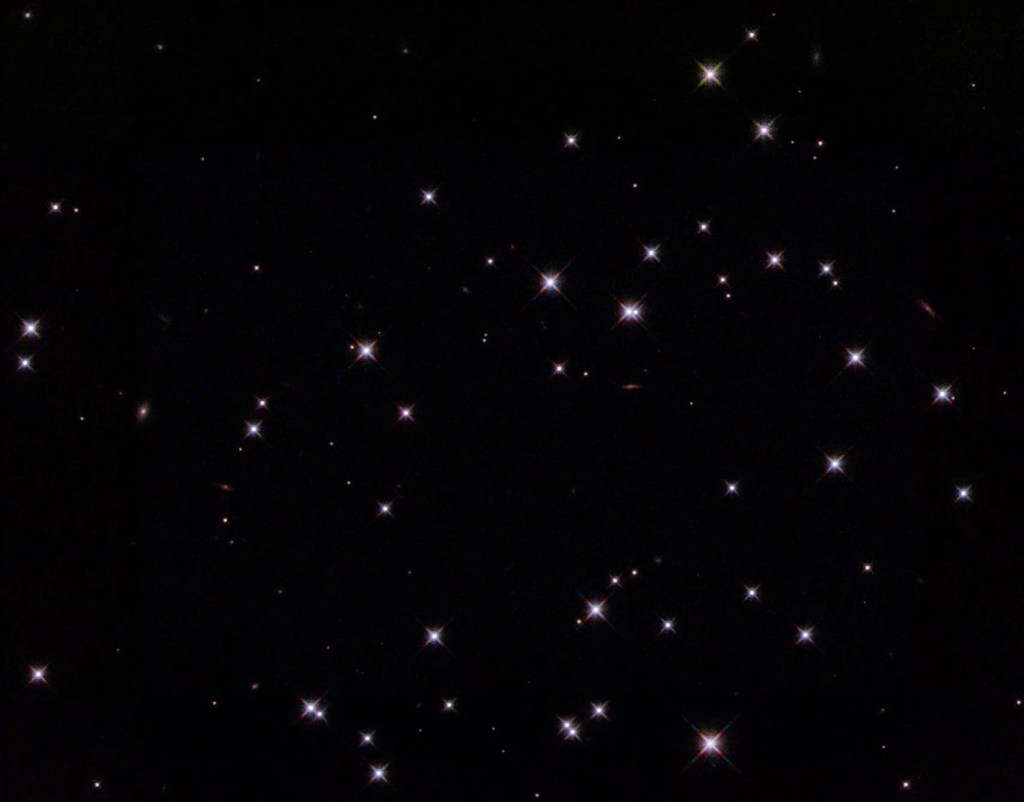
Also known as NGC 188, this group of stars formed from a large cloud of gas making the stars roughly…
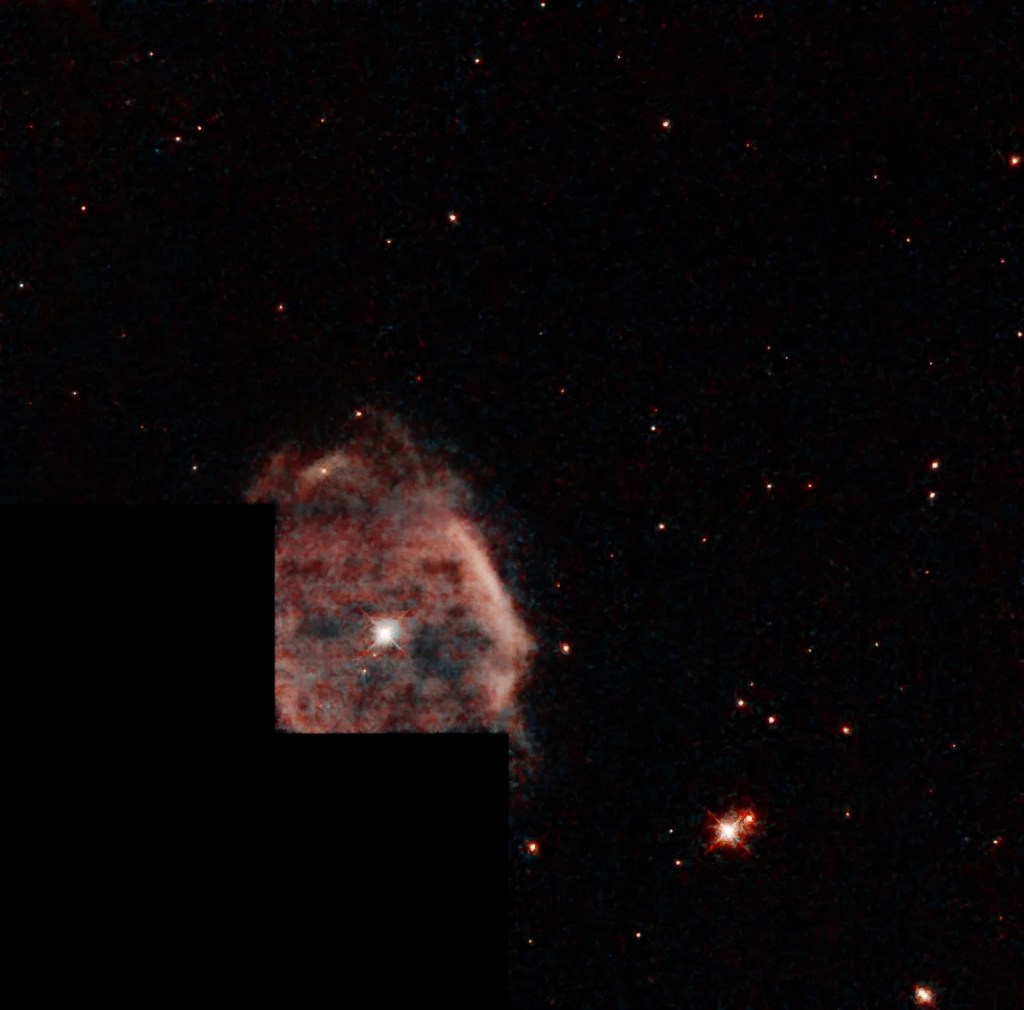
This shell of gas is expanding outward, away from the dying star within.
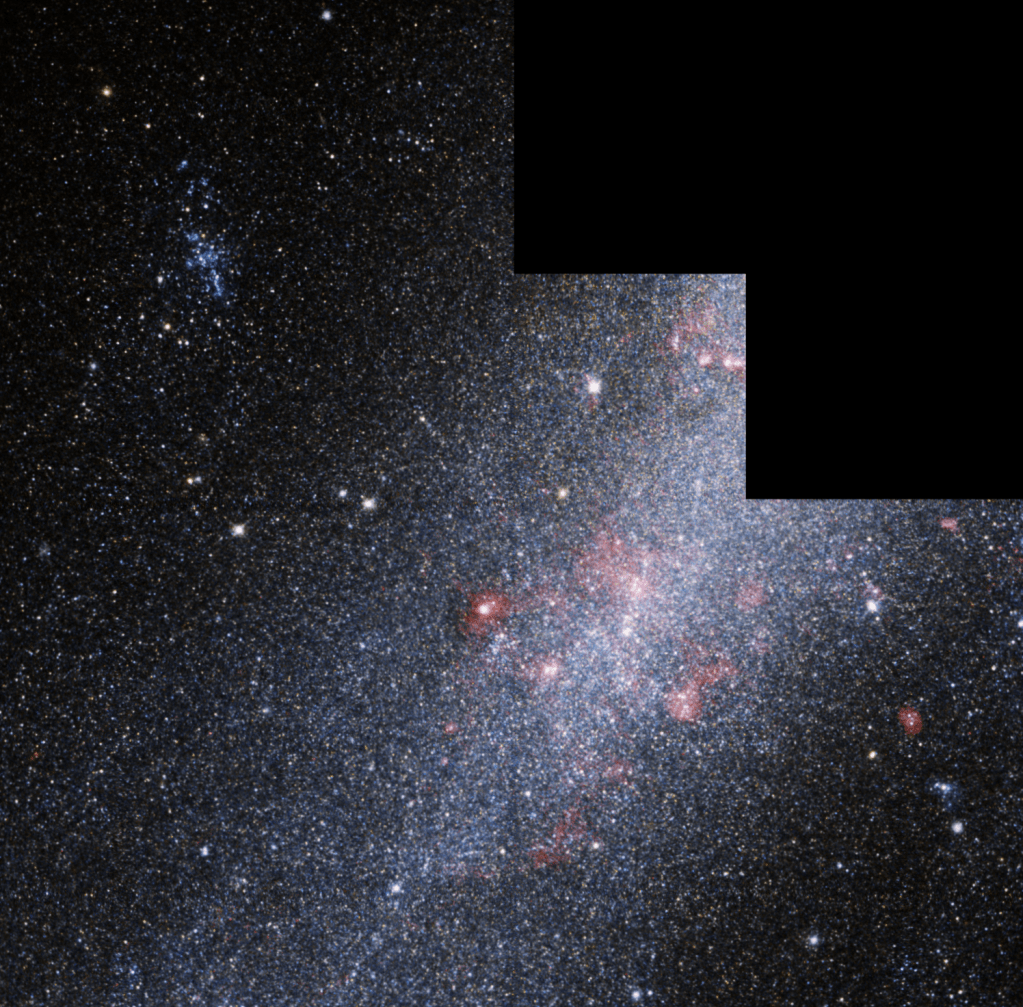
This barred spiral galaxy was first spotted by British astronomer William Herschel in April 1793 in the constellation Draco.


























